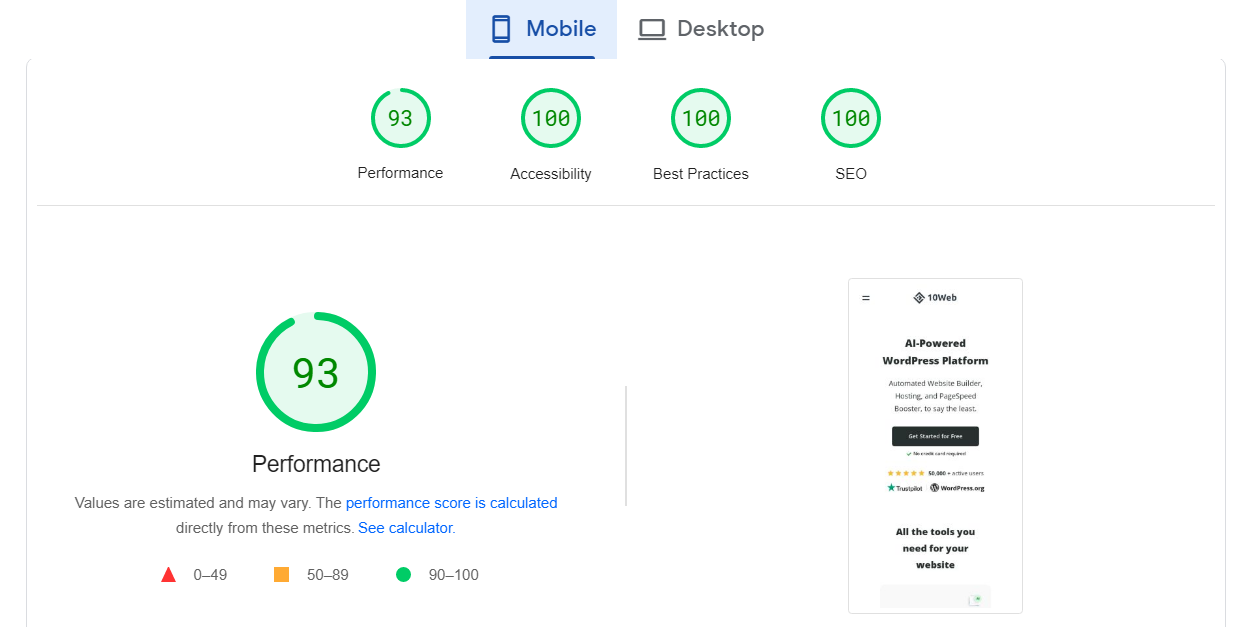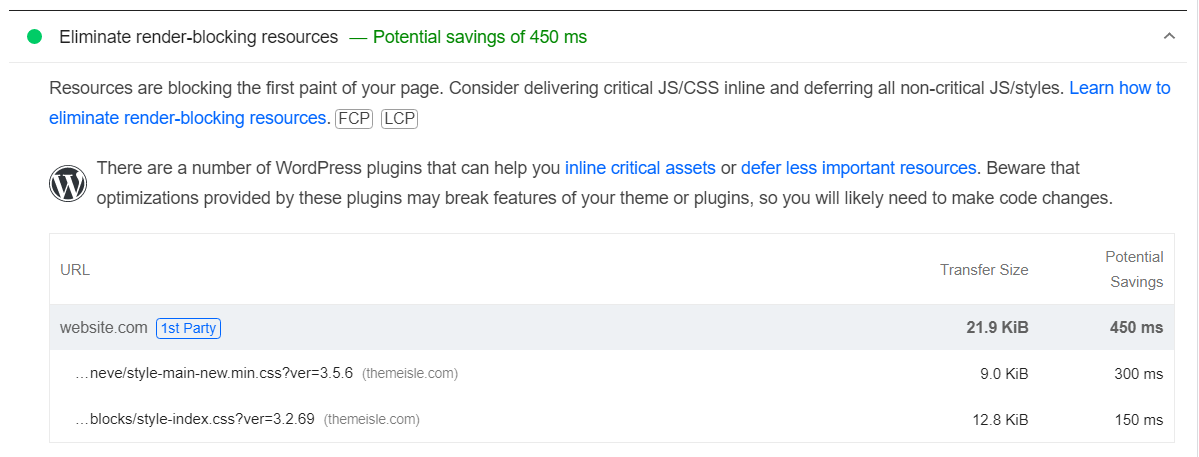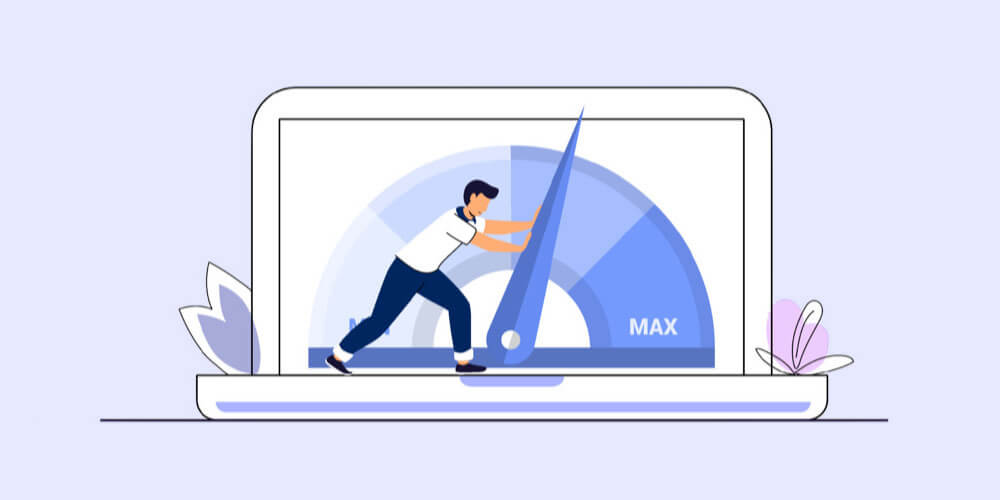Your Google PageSpeed rating says so much about your web site’s efficiency. A low rating signifies sluggish loading instances and a poor consumer expertise, so that you’ll need to take the required steps to enhance it.
Happily, the method is simpler than you would possibly assume. Utilizing PageSpeed Insights, you possibly can analyze your web site’s efficiency and get a full report on what you’re doing flawed (and how you can repair it). Furthermore, you get to see precisely how briskly your web page hundreds.
On this article, we’ll present you why your PageSpeed rating issues. Then, we’ll stroll you thru a couple of efficient steps to enhance it, and suggest some important instruments. Let’s get to it!
Why Your Google PageSpeed Rating Issues
PageSpeed Insights is a free device by Google that lets you measure your web site’s efficiency on each cellular and desktop gadgets. You should utilize the service at no cost. All you’ll want to do is enter the URL of the web page you need to take a look at:
The device then analyzes your web site and returns a rating from 0 to 100 for each gadgets. A excessive rating (90-100) signifies that your web site is optimized and gives a superb consumer expertise:

In the meantime, a poor rating (0-49) reveals that your web site suffers from sluggish loading instances and different efficiency points.
Nevertheless, PageSpeed Insights doesn’t simply return a efficiency rating. The device additionally lets you analyze your Core Internet Vitals in addition to different areas of your web site, together with web site accessibility and Search Engine Optimization (website positioning):

In some ways, PageSpeed Insights is much like different web site testing instruments. Nevertheless, it presents extra in-depth studies than most different platforms, and it’s free to make use of.
Monitoring your web site’s efficiency may help you guarantee quick loading instances. Your web site pace can have an effect on a number of different issues, together with:
Person expertise. Quick-loading web sites present a greater consumer expertise, protecting guests engaged and lowering bounce charges. In the meantime, a sluggish web site can frustrate customers, driving them away out of your web site.
Search engine rankings. Google has confirmed that web site pace is a rating consider its search algorithms. Quick web sites are more likely to rank larger in Search Engine Outcomes Pages (SERPs), resulting in elevated visibility and natural site visitors.
Conversion charges. A quick-loading web site can result in larger conversion charges. Guests usually tend to take motion (corresponding to making a purchase order or signing up for a e-newsletter) if they will navigate your web site with none points.
PageSpeed Insights will not be the one platform that measures web site efficiency or provides you insights into how you can enhance it. Nevertheless, it’s probably the best to make use of. Plus, because it’s developed by Google, it’s extra more likely to suggest greatest practices which will enhance your search engine rankings.
How one can Enhance Your Google PageSpeed Rating (4 Strategies)
Utilizing WordPress makes it a lot simpler to enhance your PageSpeed rating. With WordPress, you get entry to lots of plugins that may show you how to optimize your web site.
On this part, we’ll have a look at a couple of efficient methods to spice up your PageSpeed rating. We’ll additionally present you how you can implement them in WordPress.
1. Minify HTML, CSS, and JavaScript
Minification is the method of eradicating pointless characters (corresponding to areas, feedback, and line breaks) out of your web site’s code. When you do it proper, minification shouldn’t have any impact in your web site’s look or performance. It’s going to simply make it a bit tougher for people to learn the code, as you possibly can see on this instance:

The purpose of minification is to scale back file sizes in HTML, CSS, and JavaScript information. Most WordPress web sites have many such information, which implies minification can have a major affect on efficiency.Though you possibly can minify these information manually, it’s a time-consuming course of. Due to this fact, you might need to use a plugin like 10Web Booster to automate this job:

10Web Booster can robotically minify and optimize HTML, CSS, and JavaScript information in WordPress. The plugin may also show you how to implement different optimization measures, corresponding to eliminating render-blocking assets and changing photos to the WebP format (we’ll talk about these steps within the subsequent sections).
2. Allow Browser Caching
Browser caching permits your web site’s assets (corresponding to photos, stylesheets, and scripts) to be saved on a consumer’s machine after their first go to. This fashion, the browser received’t have to load as a lot information on future visits, which implies your web site will load quicker.
Nevertheless, for this to work, you’ll have to configure your web site to make use of caching. You are able to do this manually in WordPress by enhancing the .htaccess core file. This file governs how your web site interacts with its server and you should utilize it to configure caching, arrange redirection guidelines, whitelist IP addresses, and rather more.
Since enhancing core information generally is a little dangerous, we suggest utilizing a plugin as a substitute. There are lots of WordPress caching plugins to select from, together with:
LiteSpeed Cache: On prime of enabling browser caching, LiteSpeed Cache may help minify CSS and JS and defer render-blocking assets (we’ll clarify what these are within the subsequent part).
WP Quickest Cache: You should utilize WP Quickest Cache to generate static variations of your web site’s pages and cache them for quicker loading. The plugin additionally helps you mix CSS and JS information to scale back the variety of information customers should load when visiting your web site.
WP Tremendous Cache: This plugin allows you to select from a number of caching configurations. This protects you from having to spend an excessive amount of time tinkering with particular person settings.
Caching is likely one of the most important optimizations you may make on your web site. It helps present a a lot better consumer expertise for repeat guests, which can result in extra repeat purchases!
3. Get rid of Render-Blocking Sources
Render-blocking assets are information (corresponding to CSS or JavaScript) that have to load earlier than your web site could be displayed. Nevertheless, if these assets take too lengthy to load, customers may not stick round till the web page is prepared.
There are a number of methods to remove render-blocking assets in WordPress. When you take note of your PageSpeed Insights report, you’ll see that it tells you precisely what information you’ll want to remove or defer:

We are saying “defer” as a result of that’s a legitimate various when coping with render-blocking assets. If the file is essential (corresponding to a script your web site makes use of), you possibly can’t delete it. What you are able to do is configure it in order that it hundreds after the remainder of your web site’s parts.
You’ll be able to implement these adjustments manually by enhancing your web site’s code. Nevertheless, the simpler strategy is to make use of a plugin that defers render-blocking scripts.
A number of the plugins we’ve talked about to this point may help you do that, together with 10Web Booster, LiteSpeed Cache, and WP Tremendous Cache. When you’re already utilizing considered one of them, it ought to robotically defer non-critical assets in your web site.
4. Use the WebP Picture Format
WebP is a contemporary picture format that provides superior compression with out sacrificing picture high quality. It combines the most effective of each JPEG (lossy compression) and PNG (lossless compression) codecs, leading to smaller file sizes that load quicker in your web site.
WebP’s superior compression interprets to smaller file sizes and quicker loading instances. In case you have lots of photos in your web site, it’s best to have the ability to see an enormous enchancment in efficiency if you swap to WebP.
WordPress helps WebP out of the field (since model 5.8), which implies you possibly can add and embed WebP photos precisely as with JPEGs, PNGs, and different picture codecs.
When you’re unsure how you can convert present photos to WebP, we suggest utilizing a plugin corresponding to Converter for Media. This device will robotically convert photos in your library to WebP:

It’s essential to notice that though the overwhelming majority of net browsers assist the WebP format, some customers is likely to be unable to see these photos. Sometimes, it is because they’re utilizing an outdated browser. Sadly, that is out of your management, so the most effective factor you are able to do is suggest they replace their browser (for their very own good!).
PageSpeed Insights is likely one of the greatest instruments you should utilize to enhance your web site’s efficiency. You’ll be able to run a free take a look at to see the PageSpeed rating of any web page in your web site. The service will let you know how lengthy it takes to load and supply a number of suggestions on what to do to enhance efficiency, consumer expertise, and even accessibility.
Hopefully this information will show you how to enhance your WordPress web site’s PageSpeed rating! However do you might have any questions on how you can enhance your Google PageSpeed rating that weren’t answered? Or different ideas you’d prefer to share? Tell us within the feedback part under!




